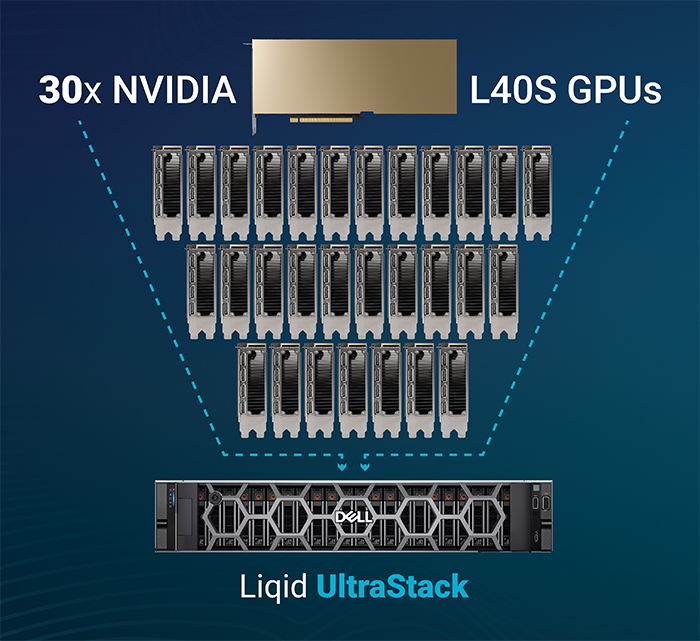Engineered for ultimate performance, the UltraStack 30 integrates 30 NVIDIA L40S GPUs into a single server
It's scalable and energy efficient
2 min. read
Published on
Read our disclosure page to find out how can you help Windows Report sustain the editorial team. Read more

If you are looking for unprecedented computational power without compromising on the form factor, UltraStack 30 is the answer. Unveiled at the recent Dell Technologies World 2024 event, the UltraStack 30 is designed by Liqid, a composable infrastructure company.
According to the company’s official blog post, the new UltraStack system integrates 30 NVIDIA L40S GPUs into a single Dell PowerEdge R760 server, a new benchmark in the industry.
The latest innovation will help data centers meet the ever-increasing demand for computation power as AI becomes mainstream. Besides, Liqid, in the official blog, discusses other viable applications.
Surpassing the limitations of traditional server configurations, the UltraStack 30 is equipped to handle a wide array of datacenter workloads, which not only include AI, but other compute demanding workloads like 3D graphics, rendering, and VDI.
The key benefits of the new UltraStack are:
- Energy efficient: Its power consumption is lower than what you expect from a setup that integrates 30 NVIDIA L40S GPUs, saving you a significant sum on the power bills.
- GPU density: In its previous UltraStack server, the company managed to integrate 20 NVIDIA L40S GPUs, which have now increased to 30 with UltraStack 30, delivering unparalleled GPU density.
- Form factor: It has a compact form factor.
- Seamless scaling: Given the flexibility, you can configure and scale UltraStack 30 as required.
- Diverse applications: The latest innovation finds applications in a diverse range of workloads, including AI, 3D graphics, and rendering.
Talking about the groundbreaking innovation, Scott Sinclair, Practice Director, Infrastructure & Modernization, EnterpriseStrategy Group, said,
In the race to accelerate time to value for AI initiatives, organizations struggle to address the data demand generated by AI while balancing the necessary GPU density and utilization. Fortunately, players like Dell Technologies and NVIDIA working with innovators like Liqid are delivering impressive new configurations and performance benchmarks like the ones achieved with the Liqid UltraStack reference architecture to help organizations keep pace with modern AI demands.
Liqid has also committed to developing more high-performance, low-latency solutions, with composableCXL (Compute Express Link) in the offing.
As AI finds increased adoption in workplaces and industries, there’s undoubtedly a growing need for solutions that can deliver high computational power without significantly affecting the form factor or operational cost to aid future development. And Liqid’s UltraStack 30 looks like a viable option right now!
What do you think? Share with our readers in the comments section.










User forum
0 messages